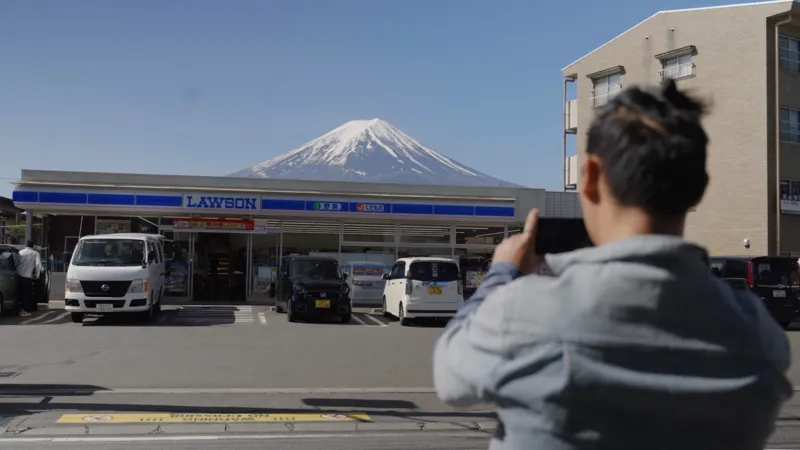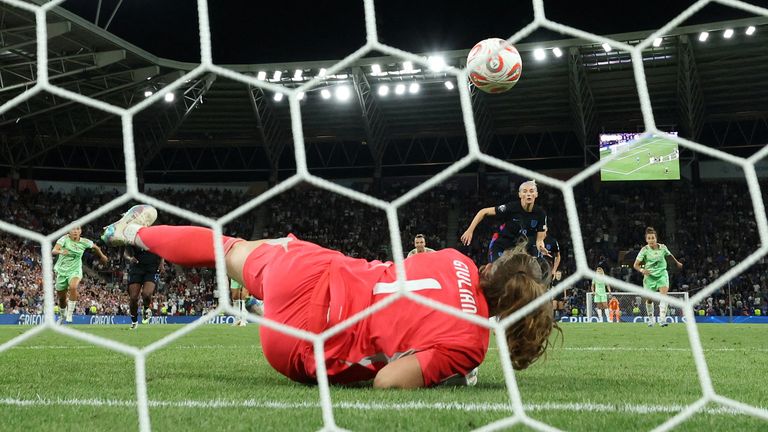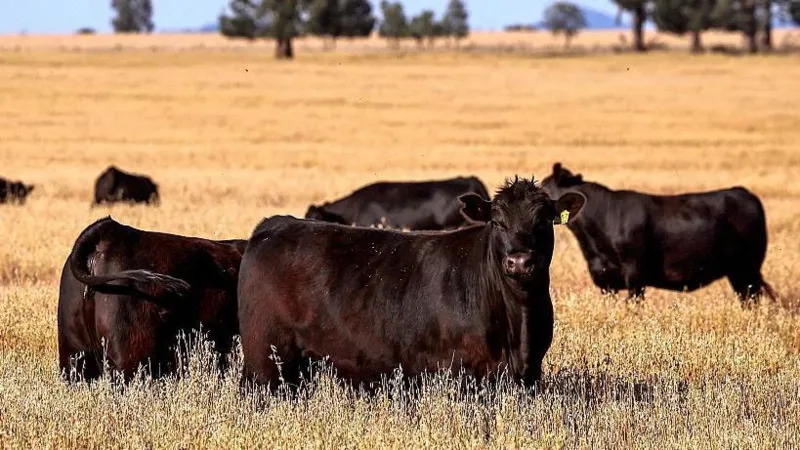Japan blocks iconic Mt Fuji view to deter tourists
A group of tourists wheel their bulky luggage and wind their way through the crowds in search of the perfect shot.

They huddle on a pavement opposite a convenience store - but this is no ordinary store. Rising behind it is Japan's highest summit, the majestic Mount Fuji.
The snowy 3,776m-peak forms a stunning backdrop for those in search of their next favourite selfie or instagrammable moment. The visitors got what they wanted – and just in time.
Fast forward a few weeks, to this morning, and that view is gone. The once-busy vantage point – the pavement – is now behind a black mesh screen, about the same length as a cricket pitch.
The barrier is the result of a chorus of complaints from locals, who say their lives have been disrupted by jaywalking and littering tourists.
The picturesque town of Fuji Kawaguchiko has been feeling the impact of a surge in tourism - arrivals to Japan crossed a record three million in March and April, driven up by a weak yen and a post-pandemic travel boom.
The screen is a desperate move and a sign of Japan’s struggle to accommodate this many visitors while protecting its streets, its famous spots and its particular way of living.
Japanese officials had announced in late April that they would be putting up a screen - but the hour of installation brought more attention to this rural corner of central Japan. As workers fixed poles and hung up wires to hold the screen, they were surrounded by a scrum of cameras. Tourists gathered as well, curious to capture the hubbub.
If the screen is meant to keep them away, it isn’t doing that - yet.
Around us, visitors wonder how effective it will be: “It may work for a few days. But I’m sure someone will make a hole [in it] and take a picture at some point,” says Kazakh tourist Yuri Vavilin.
He is disappointed he missed the crucial shot but he says he shall return tomorrow and try from either end of the screen.
This dedication is surprising to 65-year-old Kazuhiko Iwama who has lived his entire life in Fuji Kawaguchiko. His house sits opposite the ubiquitous convenience store, with its florescent lights and famous blue sign that says Lawson.
“I see it every day from my window, so I really don’t have much to say about it,” he says, looking at the volcano that draws tourists from around the world. “I guess I take it for granted.”
It’s what many have dubbed a “very Japanese” scene - the banal Lawson shouldering such a spectacular view. It is even known online as “Mount Fuji Lawson”.
Mr Iwama isn’t convinced the screen would deter the most determined of tourists. With the pavement gone, he fears more of them will step on to the street to take pictures.
He says this is precisely the problem - he wouldn’t mind tourists, if they followed the rules.
“They cross the street and they don’t seem to care about the cars at all, it is dangerous. And they leave trash and cigarette butts everywhere."
This is seen as especially rude and careless in a country with few bins on the street - you are expected to carry your trash home and dispose of it there.
The screen was a last resort for local officials. One of them had said earlier in May, “It's regrettable we have to do this because of some tourists who can't respect rules."
They did try less drastic measures. They put up big road signs in multiple languages, telling people not to run onto the road. But, they say, these have largely been ignored.
When we visited weeks before, the road had local security to prevent accidents. We saw one man blowing his whistle furiously and yelling at jaywalkers to stop. When we tried to approach him, he stopped us: “I need to concentrate please.”
On the road, a driver aggressively honked at a camera-wielding pedestrian - a rare sound in Japan - who had parked themselves in front of the Lawson, obstructing traffic.
“I think one person posted a cool picture of themselves in front of this Lawson and it went viral and everybody decided ‘I want to go there. I want that picture on my Instagram,’” says Maddison Verb who had travelled here from the United States.
She and her two friends had been taking turns posing for the picture.
Unlike their serene, filtered photos that would soon be shared on Instagram or TikTok, the scene around them was crowded and tense.
“There's a guy working here just to prevent people from crossing the road. It is insane,” said Coralie Nieke, who had been visiting from Germany.
“If I didn't have social media, I wouldn't have come here. I wouldn't even have known that this place existed.”
She described how overwhelmed she felt by the sheer number of people jostling for that one snap. But, to her relief, she managed to get the “Lawson photo”.
Kikue Katsumata, a 73-year-old local who regularly walks her dog in the area, sympathised with both sides: “I feel sad for those tourists who come all the way to see the view and take pictures, but traffic here is quite heavy, and we are all very concerned about accidents.”
“I think they’ll stand on the road to get the shot,” says Australian Maddie Godwin, echoing Mr Iwama’s concern.
Other visitors don’t see what the fuss is all about: Wandy Chow, a visitor from Toronto, says, “There are other places you can take beautiful pictures of Mt Fuji.”
Her son, Zachary, says he has found another shop with a good view of Mount Fuji.
But he won't say where. "I don’t want people to go there,” he says, smiling, thinking of his next shareable moment.
-bbc







